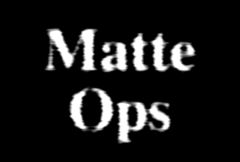S_MatteOps
Grows, shrinks, or adds noise to the alpha channel of the Source input. This can be useful for removing blue or green spill from a chroma key.In the Sapphire Composite effects submenu.
Inputs:
- Source: The current layer. The input clip containing the matte to process. The matte is assumed to have anti-aliased but hard edges, because very soft edges might not be affected in a useful way.

|